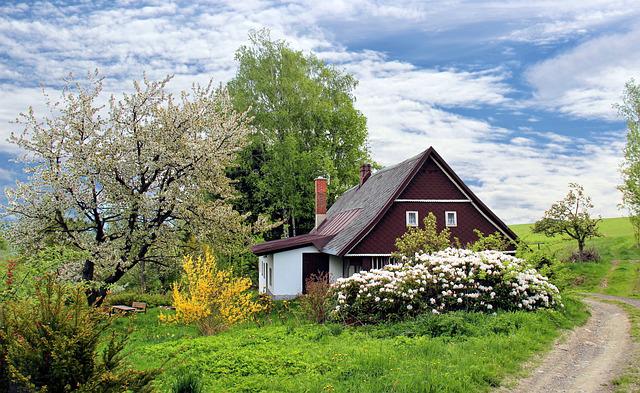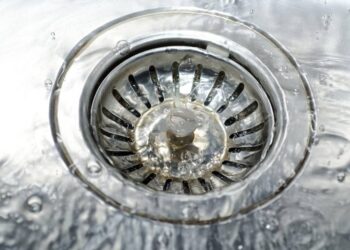If there’s one thing that is synonymous with Britain, it’s rain. Rain is essential for our crops and ecosystem, but what happens when downpours become dangerous, and flooding occurs in our gardens?
In this blog, we’ll discuss the issues heavy rainfall causes and how can we prevent flooding from ruining our gardens.
How common is flooding in the UK?
According to the Environment Agency, one in six properties is at risk of flooding in the UK. That’s over 5 million homes.
Specifically, areas more at risk from flash floods include Cumbria, Yorkshire, and Lincolnshire.
If you live in one of the regions listed above, it’s best to check that your drainage systems are effective and install one if it isn’t.
When is flooding likely to occur?
Whilst Britain is no stranger to frequent rain, the beginning and end of the year are particularly bad. On average, 112mm of rainwater fell between October 2021-February 2022, compared to 65 mm in the summer months.
In February 2020, a whopping 213mm of rainfall was recorded.
Without an effective underground drainage system on your property as we head into autumn and winter, excess water will have nowhere to go. It’ll sit on the surface, and continue to rise as long as it’s raining.
This is both damaging and not pretty to look at or smell.
What issues can floods cause in your garden?
Floods can really damage your garden, and in doing so, your home too. Here are some of the ways that heavy rainfall wreak havoc in your garden.
- Pooled water can seep below your home and shift and erode structural foundations making your house unsafe.
- Water that sits on top of your lawn can saturate the soil below, reducing the oxygen flow to roots causing root rot and eventually, death. This is the same for any plants you may have in pots that are exposed to the rain.
- Flooding can also move the soil surrounding tree roots causing the tree to fall, which is a danger to our pets as well as us.
- Debris, soil, and other blockages can be pushed down into drains causing nasty smells and stoppages.
- Excess water can also cause serious damage to the electrics on your property. Not only is this expensive to repair, but it disrupts your day-to-day needs and could even be life-threatening.
To prevent these problems, you need an effective drainage system that relieves the excess water that’s causing havoc in your garden.
Drainage installations that prevent flooding
- Land Drainage Pipes
Land drainage pipes are an affordable and efficient method of draining surface water from gardens. There are two types of land drainage coils: perforated and unperforated.
Perforated coils are fitted below the surface and work by collecting rainwater through small holes in their frame.
The collected water then filters into a more porous ground or drainage system e.g., a soakaway.
Unperforated pipes assist with channeling water out of drainage systems.
Advantages of land drainage pipes;
- As it is usually made from plastic, land drainage pipes are strong and durable, meaning it doesn’t need to be replaced often.
- It’s flexibility means it can be fit to best suit your project – unlike solid pipes.
- Soakaways
A soakaway is a drainage system installed beneath the soil in your garden.
After a hole is dug in the ground, soakaway plastic crates or gravel are inserted to collect excess drainage or rainwater from the soil above.
The system will gradually disperse the water out through land drainage pipes and recycle it back into the soil.
Soakaways have many benefits;
- Soakaways are fairly easy to install – not many tools are required, and plumbing experience isn’t essential.
There are many how-to guides online and YouTube tutorials to guide you through this simple process.
- As plastic is a highly durable and non-corrosive material, the plastic crates in a soakaway system will last for a long time, easing costs and protecting your garden for many years to come.
- A soakaway system can hold large volumes of water below the soil, making it a highly effective drainage solution.
- Planning permission isn’t required to fit one, so you can get to work on installing one as soon as you need to.
- Channel drains
Also known as a trench drain, a channel drain is a gutter tray installed in the ground that connects to an underground drainage system.
In gardens, it’s usually fitted on an angle on the edge of the turf for optimum drainage.
Soakaways or septic tanks usually collect the water the drain has channeled and disperse it away accordingly.
Channel drains are effective installations for multiple reasons;
- Channel drains are very affordable, with plastic being the cheapest option. It’s also fairly quick to install depending on the surface you’re installing one in.
- It comes in different materials depending on your needs. Plastic drains don’t corrode, whilst steel ones can handle heavy loads.
- Channel drains provide another outlet for pooled water in your garden to flow, relieving your drains of some of the pressure from flash flooding.
Keep your garden well-protected this flood season
There are many ways you can protect your garden from flooding.
Land drainage pipes, soakaways, and channel drains will all help you to keep your garden looking colorful and above water.
So, to save your home as well as your lawn, don’t hesitate to fit a drainage system this flood season.







